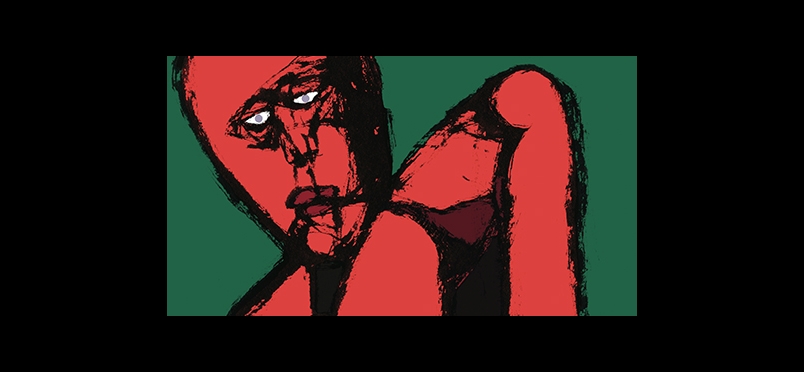| medication
Better Patient Outcomes and the CARD Trial

Cabazitaxel Improved Pain Response Over Other Meds
A pre-planned analysis of the CARD trial (NCT02485691) demonstrated better patient-reported outcomes (PROs) with cabazitaxel (Jevtana) compared with either abiraterone (Zytiga) or enzalutamide (Xtandi) in men with metastatic castration-resistant prostate cancer (mCRPC) who were previously treated with docetaxel and androgen receptor (AR)–targeted therapy. These data were made available as part of the American Urological Association (AUA) Virtual Experience platform for the 2020 AUA Annual Meeting.
Cabazitaxel improved pain response versus abiraterone or enzalutamide, in 51 (45.9%) versus 21 patients (19.3%), respectively (P <.0001). Patients on cabazitaxel had longer time to pain progression (HR, 0.55; 95% CI, 0.32-0.97; P =.03) versus those on AR-targeted agents.
The time symptomatic skeletal events were significantly delayed with cabazitaxel compared with AR-targeted therapy (HR, 0.59; 95% CI, 0.35-1.01; P =.05). These events have a large impact on quality of life for patients with mCRPC, according to Gero Kramer, MD, who presented the findings at the meeting.
Cabazitaxel had a manageable safety profile, as well as fewer cardiac disorders (4.8% vs 0.8%, respectively) when compared with the control arm. Only 3.2% of patients given cabazitaxel had febrile neutropenia due prophylactic granulocyte-colony stimulating factor given for each cycle.
Data regarding PROs were measured using the 5-Level EuroQol Group’s 5-Dimension (EQ-5D-5L) questionnaire. Patient scores were evaluated at baseline, on the first day of each cycle (every 3 weeks), and at their final treatment visit. Patients had to receive at least 1 dose of cabazitaxel or AR-targeted therapy and have an EQ-5D-5L assessment at baseline and at least 1 subsequent evaluation to be eligible. Investigators also performed a mixed-effect model repeated measures analysis of EQ-5D-5L changes from baseline.
The 5 health domains assessed by the generic house status utility instrument EQ-5D-5L are mobility, self-care, usual activities, pain/discomfort, and anxiety/depression. These domains are rated on a Likert-type scale, with 5 options: no problems, slight problems, moderate problems, severe problems, and extreme problems. VAS is rated from 0 to 100 for overall health.
Changes in utility index scores and visual analogue scale (VAS) from baseline both during treatment and at the end of treatment (EOT) favored cabazitaxel. The least squares mean difference ranged from 0.04 to 0.08 (0.05 at EOT) for utility index and 1.6 to 6.4 (5.9 at EOT) for VAS between cabazitaxel versus AR-targeted therapy. Both groups had a 0.70 mean utility score at baseline, and comparable VAS of 65.8 for cabazitaxel versus 66.3 for AR-targeted therapy.
Of patients given cabazitaxel, 45 patients (39.1%) reported moderate-to-severe or extreme pain/discomfort evaluated by EQ-5D-5L at baseline; 47 (40.9%) reported the same with AR-targeted therapy.
“Changes in VAS and utility score of EQ-5D-5L numerically favored cabazitaxel,” Kramer, of the University Hospital of Urology in Vienna, Austria, said during his presentation, said of the data. “Results support the use of cabazitaxel over abiraterone or enzalutamide as a standard of care in patients previously treated with docetaxel who progressed within 12 months with alternative AR-targeted therapy.”
The CARD trial enrolled 255 patients,2 230 of whom were evaluable for EQ-5D-5L.1
In previously reported results of CARD, cabazitaxel significantly improved median radiographic progression-free survival (rPFS) by over 4 months (8.0 months with cabazitaxel vs 3.7 months with abiraterone or enzalutamide; HR, 0.54; 95% CI, 0.40-0.73; P <.001). Median overall survival (OS) with cabazitaxel was 13.6 months compared with 11.0 months for patients receiving abiraterone or enzalutamide (HR, 0.64; 95% CI 0.46-0.89; P =.0078).2
CARD was a multicenter, randomized, open-label study of patients with mCRPC who had progressed within 12 months of receiving AR-targeted therapy before or after docetaxel. The stratification factors were ECOG performance status, time to progression on prior alternative AR-targeted therapy, and timing of AR-targeted therapy.
Patients were randomized 1:1 to cabazitaxel every 3 weeks plus prophylactic G-CSF versus abiraterone or enzalutamide once daily. The median follow-up was 9.2 months and the primary end point was rPFS. Secondary end points included OS, progression-free survival, prostate-specific antigen response, and tumor response.
At baseline, 34.9% of patients in the cabazitaxel arm were 75 years or older versus 27.0% in the abiraterone or enzalutamide arm. About 83.3% and 88.0% had bone metastasis, respectively. Most patients had pain progression at randomization in both arms.
Read the article.
Other Categories:
Did you enjoy this article?
Subscribe to the PAINWeek Newsletter
and get our latest articles and more direct to your inbox
